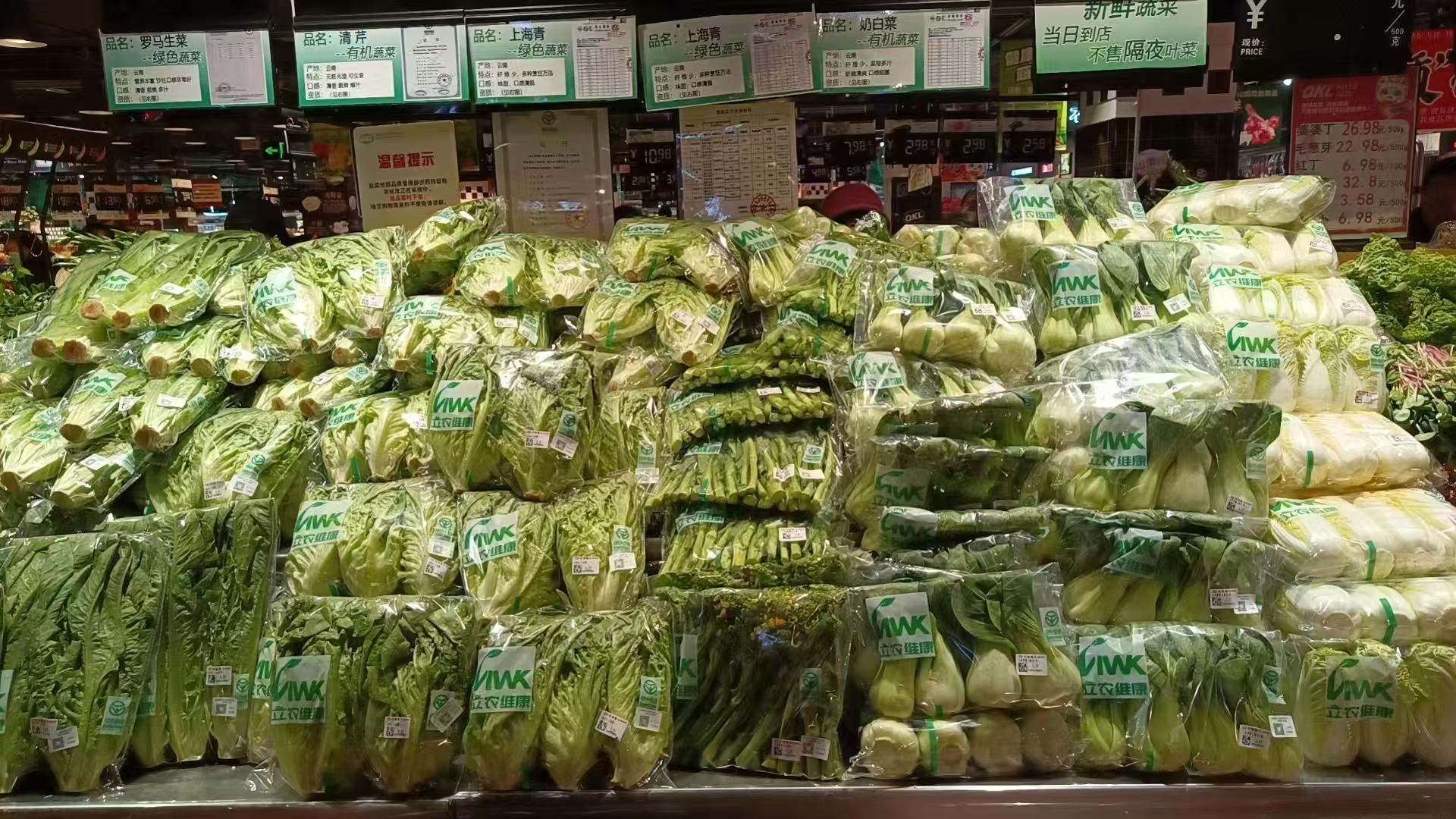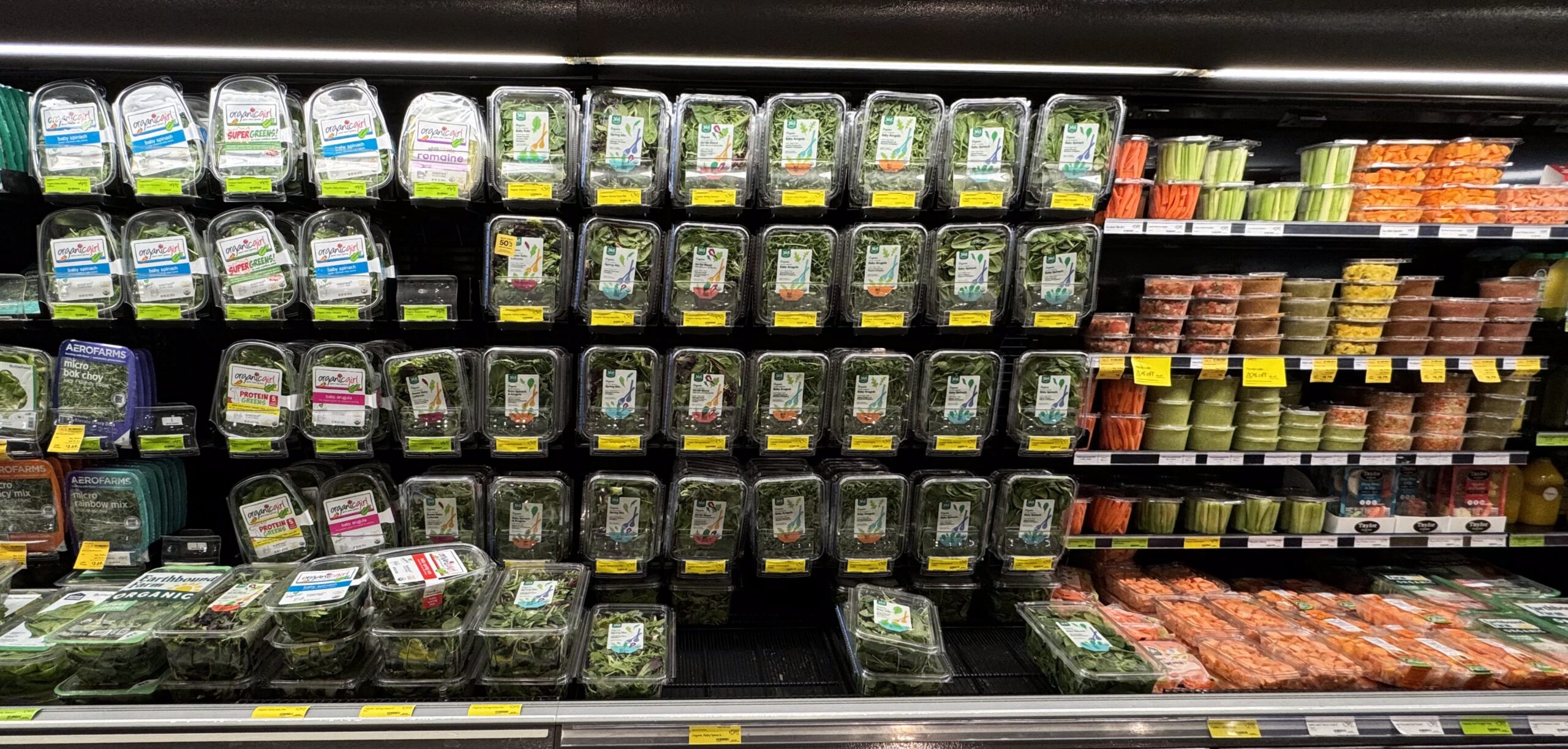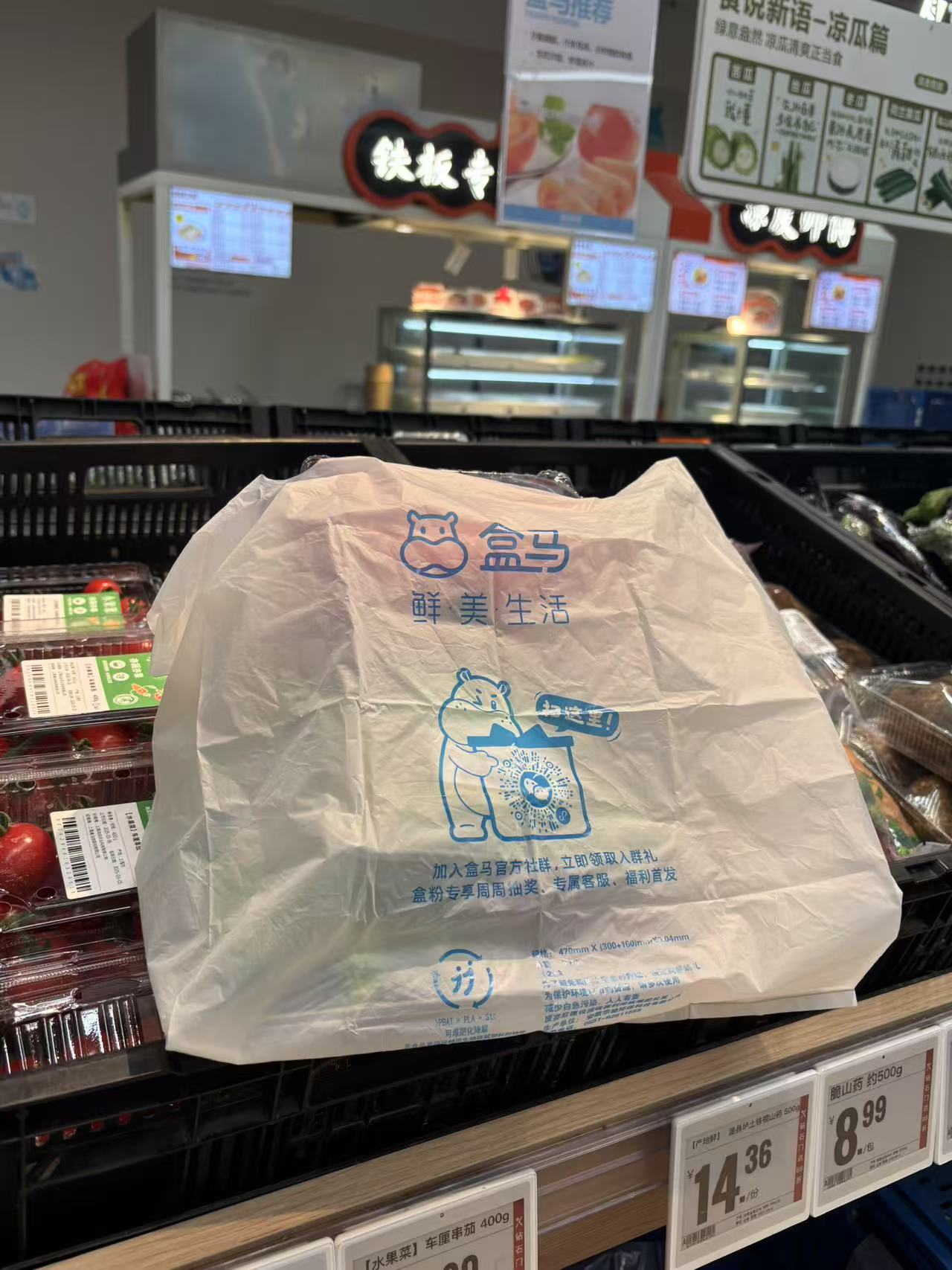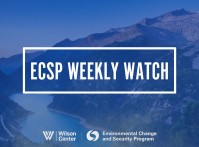-
Unwrapping the Cucumber: Q&A with Friends of Nature’s Jinghua Sun on the Hidden Crisis of Produce Plastic Packaging
July 3, 2025 By Ye LiA few days ago, I bought a cucumber at the grocery store. Hermetically sealed in a layer of plastic as if bracing itself for interstellar travel rather than a trip to my kitchen, I struggled to open it, my patience thinning with the plastic. At one point I considered using my teeth. That’s when it hit me: was this really necessary?
The produce section in US grocery stores is full of fruits and vegetables encased in layers of plastic, reflecting the overhead lights like a contemporary art installation. My mother, halfway across the world in China, sent me photos from her local store that were nearly identical to mine. Whether in Washington, DC or Beijing, we are drowning in thin plastic-wrapped cukes, styrofoam nets cradling pears, and towering stacks of plastic clamshells filled with berries. Unlike single-use plastic bags and bottles, which have been targeted by bans, fees, and take-back policies in both countries, produce packaging remains largely overlooked in policy discussions.
China and the United States are plastic superpowers, leading the world in plastic production and plastic waste. The world generated approximately 353 million tonnes of plastic waste in 2019, with single-use packaging—bags, bottles, cups, clamshells, and wraps—making up 40%.
Sea of plastic in WholeFoods
Consumers’ desire for less plastic has sparked some stores and food companies to pilot new materials, such as Whole Foods pivoting away from plastic clamshells to cardboard containers. Driscoll’s is piloting berries in paper containers. Tech start-up Apeel has created a food-based coating to seal freshness in fruits and veggies. Since 2017, China has accelerated efforts to rein in plastic pollution with major top-down policies. To de-plasticize veggies, China will also need more both bottom-up demand and business innovation.
China’s Plastic Policies
For nearly 4 decades, China was the world’s largest importer of plastic waste which was used as industrial feedstock. With mountains of domestically generated single-use plastic waste and overflowing landfills, the government launched Operation National Sword in 2017, banning most plastic waste imports. By 2020, a nationwide ban on foreign waste was in place, forcing Western countries to handle their own plastic waste.
Domestically, China’s plastic regulations have focused on high-visibility items such as plastic bags. In 2008, the government issued a national plastic bag fee. In 2020, China introduced new plastic restrictions, strengthening the plastic bag fee system and expanding bans of single-use plastics in hotels, restaurants, and e-commerce. These national rules also aimed to phase out non-biodegradable plastic bags by 2025. Produce packaging has slipped through the cracks of China’s plastic waste policies. While shopping bags have fees, produce bags are still free. Grocery chains like Hema Fresh are increasing their reliance on pre-packaged produce packaging, widening the sea of plastic in the produce aisles.
Hema’s biodegradable bag
To better understand how this issue is playing out in China, I spoke with Jinghua Sun from Friends of Nature, China’s oldest environmental NGO. They visited and observed several grocery stores in Beijing to better understand how they are managing plastic pollution.
YL: How big is the growth of pre-packaged produce in China?
JHS: “In recent years, Chinese grocery stores have moved to selling more pre-packaged fruits and vegetables. Plastic clamshell containers, foam trays wrapped in plastic film, and sealed packages have also become the norm, especially in high-end grocery chains like Hema Fresh. It’s becoming increasingly difficult to buy unpackaged produce.”
This trend is partly driven by retail efficiency. There is a policy called Clean Produce Enter Beijing, which encourages suppliers to pre-process vegetables, removing dirt, trimming stems, and cutting them into convenient portions, before shipping them in plastic packages. (Check out a short video on how Hebei farmers produce and profit from growing greenhouse veggies for the capital). “Supermarkets like Hema have taken this even further by eliminating weighing stations and putting barcodes and prices on the plastic. This speeds up checkout and reduces the need for plastic bags, but it greatly increases the consumption of plastic containers.”
YL: What is the “packaging war” in produce sections?
JHS: The packaging trend of high-end grocery chains is spreading across China’s entire fresh food industry. There is a “packaging war” where brands compete to make their produce look more premium through excessive plastic wrapping. “I’ve seen strawberries individually placed into foam trays, each secured in its own compartment. Even hardier tomatoes and other produce are getting this treatment. It’s a race to create a ‘luxury’ feel, convincing consumers that more packaging equals better quality. It’s a dangerous trend.”
YL: Are pre-packaged bags and other produce packaging recyclable?
JHS: There are three other main types of pre-packaging materials widely used for veggies and fruit in China. Plastic foam trays made from PVC (#3) are the cheapest option but also the least recyclable. Clear clamshell containers, often made of the same plastic (PET #1) as beverage bottles, have a higher recycling value. Food containers, usually polypropylene plastic (#5), are commonly used for supermarket produce and food delivery. Recycling rates for pre-packaged plastic are very poor overall. They are low-value plastics that are rarely collected or processed, even in megacities like Beijing.
YL: Are produce bags included in China’s plastic bag ban?
JHS: Beyond pre-packaged produce, the other big plastic footprint in the veggie and fruit aisle is from produce bags. These bags were never included in China’s plastic bag bans. Beijing once proposed a trial program to charge for them, but grocery stores refused to participate. “No retailer wanted to be the first to charge when their competitors were still giving them away for free.”
YL: Are biodegradable plastics a potential solution for China’s produce packaging?
JHS: With ultra-thin plastic bags with handles being phased out in China, biodegradable plastics become an alternative to traditional plastics. But these materials are far from a perfect solution for while they can be made out of corn or bamboo, they may even include some plastic. “Biodegradable plastics require specific industrial composting conditions to break down properly. Currently, China lacks such facilities, so they still end up in landfills or incinerators just like normal plastic bags.”
“The price of biodegradable bags is several times higher than that of traditional plastic bags.” Being fragile and difficult to reuse, consumers use them sparingly. Photodegradable bags are also misleading. Made with “ordinary plastics with some additives,” they’re cheaper to produce but do not actually degrade — instead fragmenting into microplastics once exposed to sunlight.
There’s also the issue of food security. Many biodegradable plastics are starch-based, meaning they are derived from corn or other food crops. “Essentially, we’re using food to replace plastic while still treating it as a single-use material.”
YL: How can China break the plastic habit in the produce aisle and beyond?
JHS: “The best solution is simply not to use plastic packaging in the first place. Some stores already stick price labels directly on produce and allow customers to bring their own bags. These approaches should be encouraged. Building up the habit of refusing plastic also becomes a model for children who can develop this waste-free habit into adulthood.”
For large grocery chains like Hema, where immediate reduction may be challenging, reuse and recycling models should be explored. “Friends of Nature and other organizations, like China Zero Waste Alliance, are working on proposals for large grocery chains. One idea is setting up a deposit system, customers could return plastic containers after checkout in exchange for a refund, allowing grocery stores to reuse or recycle.” If grocery stores become hubs for collecting produce packaging, they could then sell large volumes to recycling companies.
Moving forward, it will be important for Chinese consumers, policymakers, and businesses to prioritize reducing produce packaging. The future of sustainable food packaging hangs in the balance of their choices.
Ye Li was a 2024-2025 communications intern at the Serious Games Initiative of the Wilson Center. She worked on numerous multimedia storytelling projects focused on social impact. Her research and advocacy interests are sustainable agriculture and global agrifood system transformation. She holds a degree in Communication, Culture, and Technology from Georgetown University.
Lead Image Credit: Sea of plastic in a grocery store in China, Courtesy of Dongmei Li
Second Image Credit: Photo courtesy of author
Third Image Credit: Photo courtesy of Xiaochuan
Sources: Apeel, Break Free From Plastic, CCTV Finance, China Ministry of Ecology and Environment, Driscoll’s, Friends of Nature, PRC Policy Documents, US Department of Energy, Voronoi
 A Publication of the Stimson Center.
A Publication of the Stimson Center.










